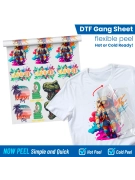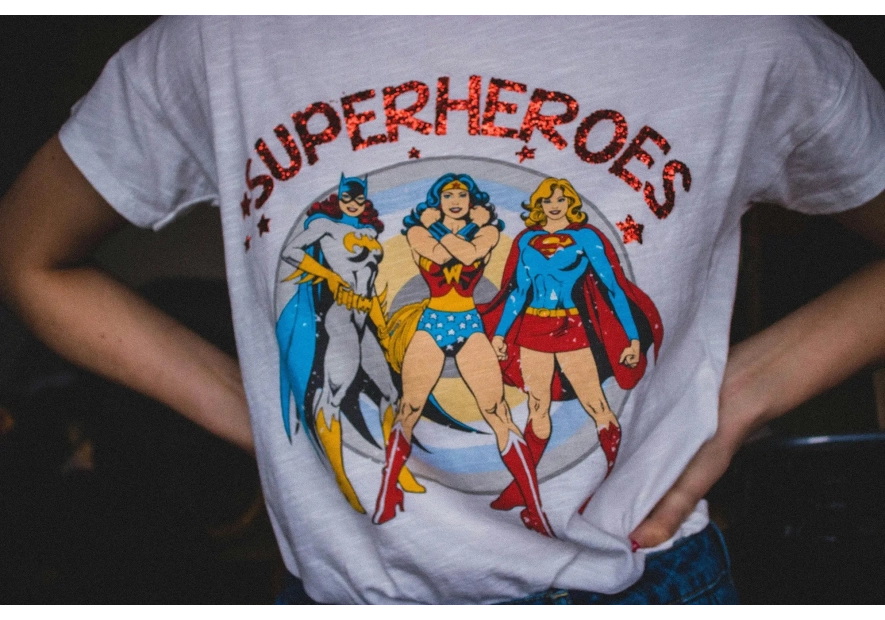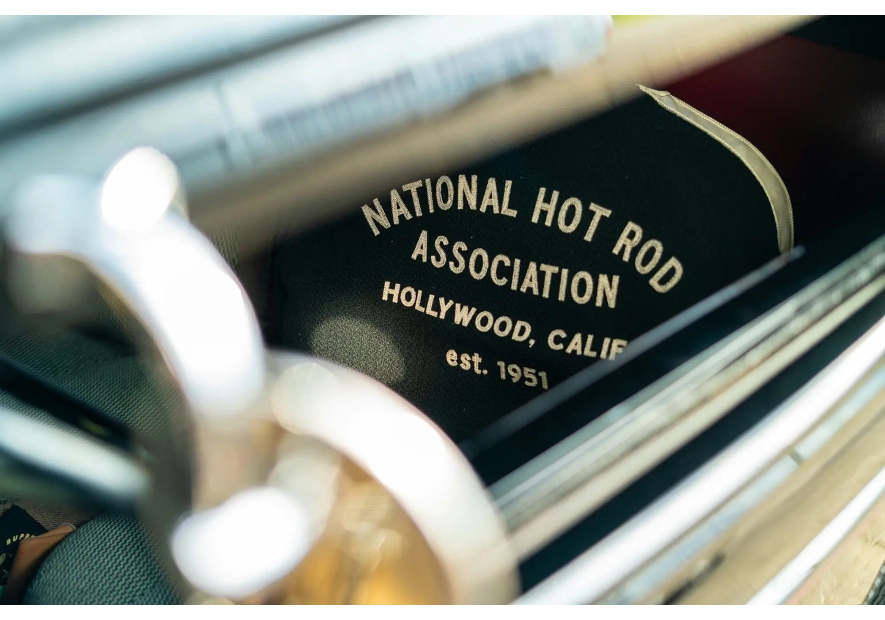Direct-to-Film Printing: The Pros, Cons, and Everything in Between

Are you intrigued by direct-to-film (DTF) printing for your business? Before taking the plunge, it's vital to look at both sides: strengths and potential weak spots.
The promises of flawless output sound enticing, but DTF printing can pose a few challenges for the unprepared. For example, many business owners feel a little surprised at the initial investment.
So, what are the direct-to-film printing pros and cons? We'll cover many of them in this guide, along with a few tips designed to help you work through the challenges you may encounter.
Take time to explore this innovative printing method before you invest in equipment and supplies. Making informed decisions helps avoid mistakes and disappointments down the road.
We're confident that by the end of the article, you'll cast your vote for DTF printing, so let's walk through the pros and cons together
What Is the Big Deal About DTF Printing?
Anything that generates buzz in the printing world commands attention. Digital printing is where more businesses are going with their printing needs. And digital is where DTF designs begin.
Direct-to-film (DTF) printing is a method where you print designs directly onto transparent film. The process begins by creating or selecting a digital design.
You then transfer the design with a DTF printer, which uses special ink formulated for film printing.
After printing, the design must cure. This ensures the ink adheres properly to the film. After curing, you will place the film onto the substrate (fabric, paper, or another material).
Next comes heat and pressure, which causes the ink to transfer from the film onto the substrate. The result is a vibrant, detailed print.
When comparing DTF printing with other methods like screen printing or direct-to-garment (DTG) printing, you'll notice several distinctions.
Unlike screen printing, which involves creating stencils and applying layers of ink, DTF printing offers a more direct and efficient process. The process works particularly well for complex designs with multiple colors.
DTG printing applies ink directly onto the fabric. Selecting this method may mean a struggle when using certain materials. Also, DTG doesn't play well with intricate designs.
What Are the Direct-to-Film Printing Pros and Cons?
We'll go into more detail on the pros of DTF printing over the next few sections, but in comparison with alternate printing methods, DTF is more versatile and achieves finer details without a lot of fuss.
Like any great technology, DTF printing does have a few things that we consider cons. None of them are insurmountable.
Let's look at some of the advantages that make DTF printing such an attractive option for businesses looking for high-quality prints on a wide range of materials.
High-Quality Output and Resolution
DTF printing stands out for its exceptional print quality and resolution. Unlike traditional methods, DTF delivers sharp, vibrant, incredibly detailed prints.
It's all about precision. A precise application of ink onto the substrate, results in prints that the original design with uncanny clarity.
For example, you can reproduce intricate patterns, fine lines, and small text. Every detail comes through with unmatched accuracy. Whether it's complex artwork or a high-resolution photograph, DTF printing excels in preserving the integrity of the design.
The high-quality output of DTF printing is beneficial for various applications, including:
- Apparel
- Merchandise
- Signage
In the fashion industry, DTF prints offer a level of detail and color vibrancy that other methods can't reach. If you're in the signage niche, DTF technology allows you to create eye-catching, durable prints. DTF prints stand out in any environment!
The superior print quality and resolution of DTF printing make it a preferred choice for businesses looking to achieve professional results across various applications.
Where Does DTF Printing Shine?
It's not enough to give a nod to only three types of products that benefit from DTF printing. You'll find this printing method used across a wide range of applications. For inspiration, here are a few ways you can use DTF prints:
Promotional Products
You can use DTF printing to customize promotional items. Think tote bags, hats, keychains, and drinkware.
Home Décor
Who doesn't enjoy personalized home décor items? Your customers will love how DTF designs look on pillows, curtains, wall art, and even lampshades.
Sports and Team Gear
DTF printing is a fantastic option for custom sports uniforms, jerseys, and team gear. In this niche, you can't sacrifice vibrant colors or the ability to print intricate designs.
Personalized Gifts
When people shop for personalized gifts, unique and memorable are keywords. DTF prints look great on mugs, phone cases, photo frames, and custom prints.
Automotive Accessories
If you cater to clients in the automotive industry, DTF printing is your go-to partner. Use it to customize seat covers, floor mats, and car decals with logos, designs, and graphics.
These are just a few ways you can use DTF prints. Businesses also use them to create educational materials, industrial labels and decals, packaging and branding, and even fine art and photography. Whew!
Now let's get back to the pros of this revolutionary printing method.
Versatility Across Various Substrates
DTF printing offers remarkable versatility in terms of substrate compatibility. That means you can print on a variety of materials. You already know DTF prints work well with cotton, polyester, nylon, plastic, and glass. Versatility extends to various fabric weights and textures, including:
- Leather
- Denim
- Spandex/Lycra
- Satin
- Velvet
- Fleece
- Linen
- Canvas
- Vinyl
- Paper/Cardstock
In addition to using it on different textures, DTF printing suits light and dark-colored materials. What a great way to expand your product offerings and cater to diverse customer needs!
Ability to Replicate Intricate Designs
Earlier, we touched on design intricacy. DTF printing excels in reproducing intricate designs with precision and clarity.
For example, DTF prints maintain the sharpness of the original designs. These prints are ideal for applications where precision is non-negotiable. Whether printing patterns on textiles or graphics on promotional items, DTF technology delivers consistent results with exceptional accuracy.
Accurate color registration and layering play a crucial role in achieving detailed prints. By carefully aligning each layer of ink and maintaining consistent ink deposition, DTF printers can reproduce multicolored graphics with stunning clarity and depth.
Now, let's move on to the potential disadvantages of DTF printing. After all, there's no perfect solution, although DTF comes close.
Initial Investment in DTF Equipment
Setting up a direct-to-film (DTF) printing operation requires an initial investment in specialized equipment. This includes purchasing DTF printers, curing units, and related accessories. Specifically designed for the DTF process, these printers use advanced technology to achieve high-quality prints.
The cost can be considerable, particularly for businesses operating on tight budgets or exploring DTF printing as a new venture. Along with the initial purchase cost expenses, you'll need to consider ongoing expenses such as:
- Maintenance
- Repairs
- Replacement parts
To ensure optimal performance and print quality, DTF printers need regular maintenance. This may involve servicing the printer, replacing printheads, or updating software.
To address DTF cost, businesses should conduct thorough research to assess the total cost of ownership associated with DTF equipment. This includes evaluating upfront costs, ongoing maintenance expenses, and potential returns on investment.
Longer Production Time
Despite its numerous advantages, DTF printing often requires longer production times compared to some alternative methods. What's the difference?
The DTF printing process involves multiple steps, including:
- Printing the design onto the film
- Curing the ink
- Transferring the design
Each step adds to the overall production time, resulting in a slower turnaround.
For businesses operating in industries with high demand and tight deadlines, longer production times can pose challenges. Meeting expectations for quick order fulfillment may be difficult, especially during peak seasons or when dealing with large volumes.
How to Mitigate Longer Production Times
There's no reason to decide against DTF printing because production takes longer. Instead, businesses can implement strategies to streamline their workflow and optimize efficiency. This may involve:
- Investing in automated equipment
- Optimizing print settings for faster processing
- Scheduling production runs more effectively
By optimizing their operations, any business can minimize the impact of longer production times on productivity and customer satisfaction.
Environmental Considerations and Waste Generation
The impact on the environment is a significant concern in the printing industry. DTF printing is no exception. One of the drawbacks of DTF printing is its potential environmental impact, due to waste generation and resource consumption.
DTF printing produces waste in the form of used film, excess ink, and other consumables. Improper disposal practices can lead to pollution and other environmental concerns. Responsible disposal helps minimize the environmental footprint of DTF printing operations.
The curing process may involve the use of heat and chemicals. Both can contribute to air and water pollution. Businesses must ensure compliance with environmental regulations and use best practices for waste management.
Actions You Can Take to Mitigate Environmental Impacts
Sometimes when people hear the words "environmental impact" in a negative manner, it discourages them from even exploring their options. But you can address environmental concerns and the solutions are not out of reach for most businesses.
Start by exploring eco-friendly alternatives and sustainable practices in DTF printing. This may include:
- Using recycled materials
- Optimizing ink usage
- Investing in energy-efficient equipment
By adopting environmentally responsible practices, businesses can minimize their environmental impact while still leveraging the benefits of DTF printing technology.
Potential Challenges in DTF Printing
DTF printing offers numerous benefits, but like any printing process, there will be challenges. Understanding the challenges and the solutions to overcome them is essential for ensuring smooth and efficient DTF printing operations.
Here are some of the common challenges you may encounter:
Ink Adhesion
Poor ink adhesion to the substrate can lead to smudging, fading, or incomplete prints. All of these compromise the quality and durability of the final product.
Film Alignment Problems
Misregistration and distorted prints may occur due to incorrect placement or shifting of the film during printing or transfer. Precise handling and alignment throughout the DTF printing process is critical.
Curing Inconsistencies
Inconsistent ink curing can result in uneven colors, poor durability, or insufficient adhesion to the substrate. This undermines the quality and longevity of the printed materials.
Printhead Clogging
A build-up of ink or debris on the printhead can cause nozzle clogging. The result is often streaks or missing lines in prints.
Addressing these challenges requires troubleshooting and problem-solving skills. Identifying the root cause of the problem and applying the right solution is crucial for minimizing downtime and ensuring high-quality prints.
Strategies for Troubleshooting and Optimization
Do not let potential issues prevent you from taking advantage of the many pros of DTF printing. To overcome the challenges, it's wise to have some strategies in your back pocket. Here are some ways other businesses mitigate problems:
Regular Maintenance
As you know, any printing equipment needs regular attention. Performing routine maintenance tasks such as printhead cleaning, ink system flushing, and calibration can help prevent issues related to ink flow, curing, and print quality.
Quality Control Checks
Make sure you have quality control procedures in place before running your first print job. Print tests and inspections can help detect and address issues early in production.
Proper Film Handling
Ensure correct handling and alignment of the film during printing and transfer. This can help prevent misregistration and alignment problems.
Temperature and Humidity Control
Maintain optimal environmental conditions. Appropriate temperature and humidity levels can help ensure consistent curing and printing quality.
Training and Education
Provide comprehensive training for staff members involved in DTF printing operations. Training helps improve troubleshooting skills. It also helps optimize workflow efficiency.
By using these strategies, businesses can address common challenges before they impact performance and productivity. Don't forget to keep your team informed about advancements in DTF technology and best practices. It's an excellent way to stay ahead of potential issues and maintain high quality and efficiency in your printing operations.
Experience the Benefits of DTF Transfers
Understanding direct-to-film printing pros and cons is essential for informed decision-making. Having solutions ready to overcome the challenges is vital.
For high-quality DTF transfers, explore DTF Transfers Wholesale. We offer a vast selection of designs and customization options to meet your printing needs. Choose quality and versatility for your next printing project.
Shop our selection of unique designs and gang sheets. We promise you will be thrilled!





Leave a comment